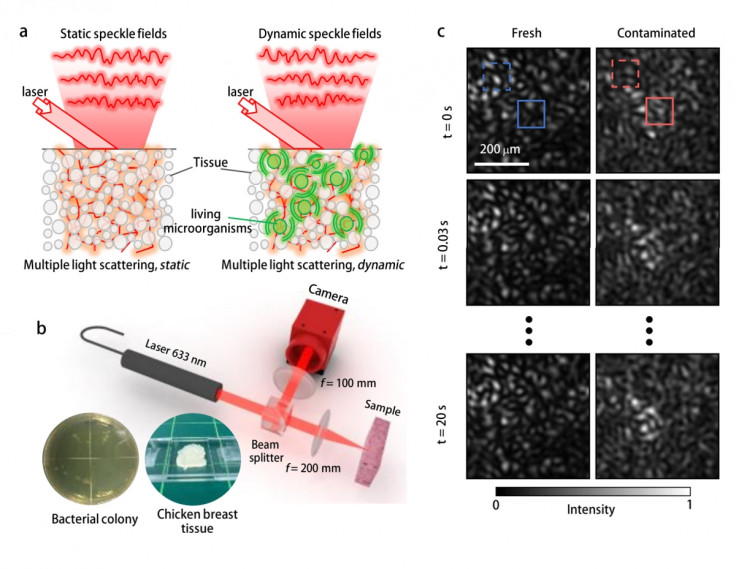Korean scientists develop affordable laser system that can detect E. coli on food in seconds

Korean scientists have developed a new way to cut down on the number of cases of food poisoning in the world – a portable laser system that can detect bacteria on food in just a few seconds.
According to the Food Standards Agency, in the UK every year there are more than 500,000 cases of food poisoning from known pathogens like Campylobacter, Clostridium perfringens and Salmonella, and poultry meat causes the most cases of food poisoning, followed by vegetables, fruit, nuts and seeds. Meanwhile in the US, approximately 50 million people suffer from food poisoning every year, and globally, the World Health Organization says that 351,000 people die from food poisoning per annum.
It is still difficult to detect bacteria in food products, and although there are techniques like polymerase chain reactions, microbiological culturing, mass spectrometry and high performance liquid chromatography, these methods are expensive, time consuming and complex, so very few food companies can afford these technologies.
So researchers from the Korea Advanced Institutes of Science and Technology in South Korea have invented a portable laser system that can detect bacteria growing on food in just a few seconds by scanning the food with a laser beam.
Laser scatters to form a distinct pattern

When a red laser beam hits any form of biological tissue, it scatters throughout the material. The scattering causes the light generated to interfere, which forms a random pattern known as "laser speckle".
Now here's the gross part – bacteria growing on the surface of food also scatters light, which influences the laser speckle pattern. So to detect the changes in patterns that signify bacteria, the researchers added a camera to the laser system that takes 30 frames a second, and the system processes the images by subtracting one file from another to see if there is a difference.
In experiments, the portable laser has succeeded in detecting the bacteria E. coli and Bacillus cereus from contaminated pieces of chicken breast. Although the laser system cannot tell the difference between bacteria, it can however detect differences between uncontaminated meat and contaminated meat, and best of all, the detection can happen from a distance.
Contaminated food detection could be so much better
So this means that the laser system could be used by workers in a food processing plant to check products by holding the laser over the assembly line, and since the parts needed to make the laser system are cheap, it means it would be very easy to fit refrigerators with the lasers so people can scan leftover food or produce they've left in the fridge for too long before they cook or eat it.
The technology could also be hugely useful in developing countries, but the one drawback is that the laser system can't identify what type of bacteria has contaminated the food, or viral contaminants, like the norovirus which are invisible to the laser as they do not affect the laser speckle over time at all.
The study, entitled "A simple and rapid method for detecting living microorganisms in food using laser speckle decorrelation" is published on Cornell University Library's open source database.
© Copyright IBTimes 2025. All rights reserved.





















